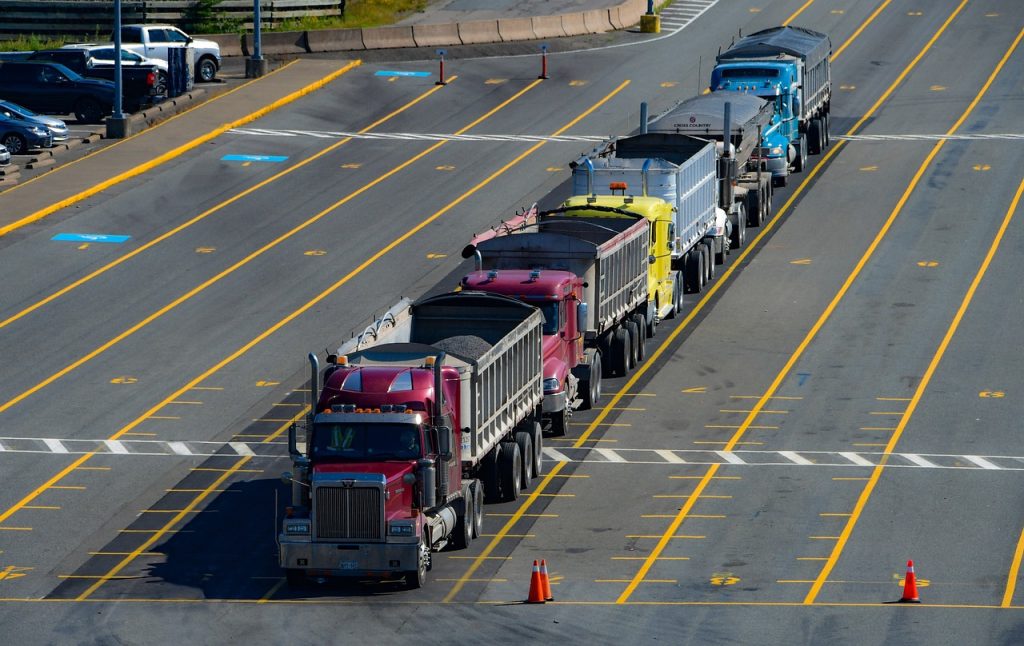Montana Truck Weight Limits
Freedom Heavy Haul can offer expedited Pickup and Delivery for any size shipment anywhere in the USA. Contact us today for No Hassle, No Pressure Pricing.
In the vast, mountainous terrain of Montana, truck transportation plays a critical role in the state’s economy. However, to ensure the safety of its highways and the longevity of its infrastructure, Montana enforces specific truck weight limits. These regulations are designed to prevent road damage, enhance traffic safety, and align with national standards for vehicle weights. In this article, you will learn about the Montana truck weight limits and its permits.
Montana Truck Weight Limits and Regulations on Interstate Highways
Montana’s interstate highways form a critical part of its transportation infrastructure, accommodating a significant volume of commercial traffic. The state adheres to a standard Gross Vehicle Weight Rating (GVWR) limit of 80,000 pounds on these highways. This limit is in line with federal regulations and is intended to balance the need for efficient cargo transportation with road safety and infrastructure preservation.
For a broader understanding of the safety and compliance measures involved in heavy haul transport in Montana, you can read Ensuring Safe and Compliant Heavy Haul Transport in Montana.

However, the weight limits can vary depending on the type of road. Primary highways, secondary highways, and local roads each have their own set of regulations, reflecting their differing capacities and usage patterns. Understanding these varying limits is essential for truckers navigating through different road types in Montana.
Permit Requirements for Oversize and Overweight Loads
For loads that exceed the standard GVWR limits, Montana provides a system for obtaining special permits. These permits are essential for transporting oversized or overweight loads that are crucial for certain industries but exceed standard weight limits. The process of obtaining these permits involves an assessment of the load, the proposed route, and potential safety implications.
The state imposes strict criteria for permit issuance, ensuring that such loads are transported with minimal risk to road users and infrastructure. This process not only helps in managing the transport of exceptional loads but also in preserving the integrity of the state’s roadways.
For insights into how to stay compliant during heavy haul operations, read Achieving Compliance in Montana’s Heavy Haul Operations.
Axle Weight Restrictions
Axle weight limits are a fundamental aspect of Montana’s truck weight regulations. These limits are designed to distribute the vehicle’s weight evenly across its axles, thereby reducing the strain on road surfaces. In Montana, a single axle may not carry a load exceeding 20,000 pounds.

This regulation helps prevent concentrated pressure points on road surfaces, which can lead to accelerated wear and tear. Adherence to these limits is crucial for maintaining the structural integrity of the roads and ensuring long-term durability.
For broader safety and compliance considerations, check out Montana Heavy Haul: Key Safety and Compliance Considerations.
Multi-Axle Weight Constraints
For trucks with multiple axles, the state specifies that no two consecutive axles, spaced more than 14 inches but less than 96 inches apart, may carry a load exceeding 34,000 pounds. This regulation is particularly relevant for vehicles like semi-trailers and tandem trucks, which typically have multiple axle configurations.
Additionally, tridem axles – a set of three axles situated close together – are subject to a maximum weight limit of 42,000 pounds. These regulations ensure a more even distribution of the vehicle’s total weight, mitigating the impact on the road surface and promoting safer driving conditions.
Special Weight Provisions and Exceptions
Montana’s truck weight regulations are further defined by the federal bridge formula, which sets a maximum gross weight limit of 131,060 pounds. This formula is used to determine a vehicle’s maximum weight based on its axle spacing.

It is a crucial tool for preventing damage to bridges and overpasses, which are often the most vulnerable components of road infrastructure. Complying with this formula is essential for protecting these critical structures from excessive stress and potential damage.
Long Combination Vehicles (LCVs) and Enhanced Weight Limits
In specific cases, Montana allows for the operation of Long Combination Vehicles (LCVs). These vehicles, due to their size and weight, are subject to stringent regulations. Under certain conditions, such as agreements with neighboring regions like the Canadian Province of Alberta, Montana permits increased weight limits up to 137,800 pounds for these vehicles. These exceptions are carefully monitored to ensure that they do not adversely impact road safety or infrastructure. Such provisions demonstrate Montana’s flexibility in accommodating different transportation needs while still prioritizing road safety and infrastructure preservation.

Impact and Enforcement
The Montana truck weight limits have significant implications for the trucking industry and road maintenance. By limiting the weight of trucks, the state aims to reduce the frequency and severity of road repairs, ultimately leading to cost savings in infrastructure maintenance. Furthermore, these regulations play a crucial role in ensuring road safety, reducing the risk of accidents caused by overloaded or improperly balanced vehicles. The enforcement of these regulations is key to achieving these objectives, ensuring that all truckers and transportation companies operate within the set guidelines.
To learn how enforcement impacts safety in heavy haul operations, read Ensuring Safety and Compliance in Montana’s Heavy Haul Industry.
Monitoring and Compliance Mechanisms
To enforce these weight limits, Montana employs a variety of monitoring and compliance mechanisms. Weigh stations and roadside checks are common, where officials can assess if a truck complies with the state’s weight regulations.
Additionally, the use of modern technology such as portable weigh-in-motion systems allows for more efficient and accurate monitoring of vehicle weights. Violations of these regulations can result in substantial fines and penalties, underscoring the state’s commitment to maintaining safe and sustainable road networks. These measures are essential for upholding the regulations and ensuring that all stakeholders adhere to the established weight limits.







